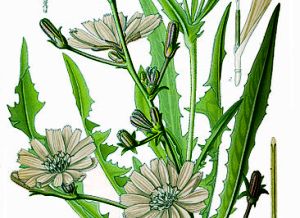Cows on grass prefer herbs as a side dish

Scientists from Aarhus University have studied a selection of herbs and their potentially beneficial effects in cows.
Grazing cows do not just automatically move to the next patch of grass for their meal. If possible, they will choose a meal containing different kinds of herbs.
A varied diet helps to cover the nutrient requirements of the animals and to maintain their resistance to disease and parasites. The different herbs also have an effect on the milk and meat quality produced.
What are the benefits of the individual herbs?
There is very little documentation in literature on the many alternative plants that farming historically has made use of or that occur naturally in permanent pastures.
“We have therefore reviewed the available knowledge about alternative plants that could potentially be used in organic productions,” explains scientist Klaus Horsted from Aarhus University.
“The ambition with the literature review was to acquire more knowledge about the effect of the herbs on health, productivity and milk quality as part of a larger project on the effect of pasture composition on milk production.”
Herbs are healthy
The scientists have reviewed literature on the herbs garden burnet, nettle, chicory, sainfoin, cock’s head, birdsfoot trefoil, ribwort plantain, dill, fenugreek, caraway, dandelion, parsley and medick.
During the literature review they focused on different plant ingredients, but primarily different phenolic compounds (particularly tannins), phytoestrogens and essential oils.
It appears that a moderate tannin content in the feed can sometimes have a positive effect on animal productivity and health, for example via the effect on protein degradation and to overcome parasite infections.
And there are other compounds in field herbs that can have a positive effect on health, for example for fighting bacterial infections or aiding digestion.
The different mixtures of compounds in the herbs can also affect the quality of the animal product such as the milk quality.
Platform for further investigations
Of all the herbs, chicory is the most studied. It has turned out to be a useful crop in grazing systems, partly because animals like it and eat relatively large quantities of it.
“Sainfoin and plantain also deserve a closer study. The other herbs have not been scrutinised quite as closely but have previously been used to feed livestock and could be used for this again both in connection with grazing and as feed supplements in preserved forage,” the scientists state in their report.











